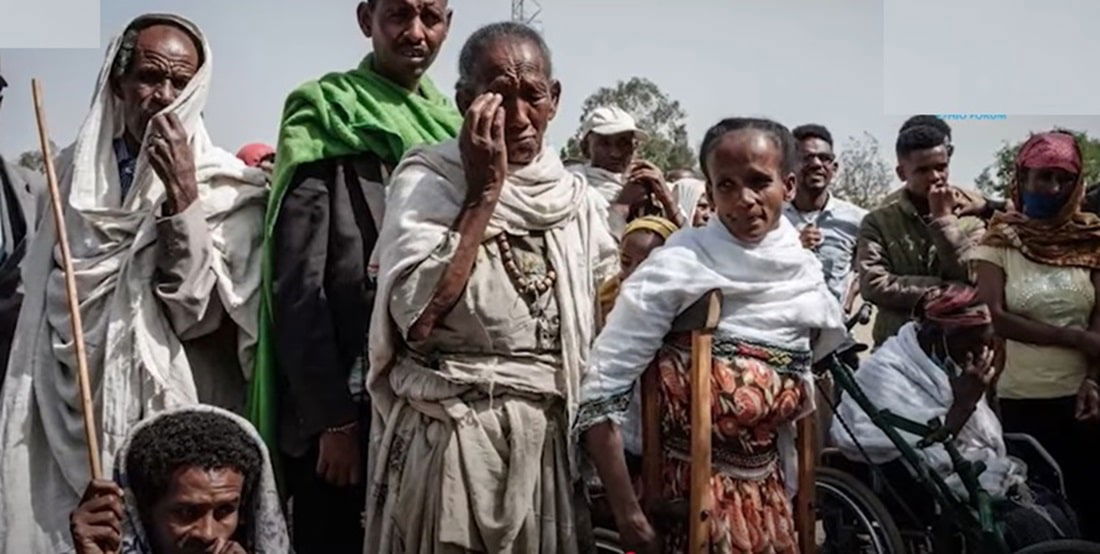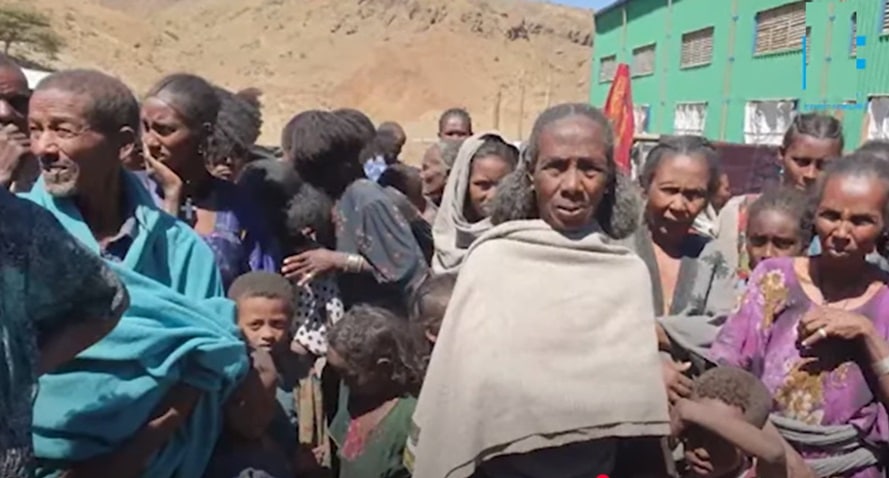June 17, 2025
The Habessha

Hunger Crisis in Ethiopia, especially in Wagmra, makes headlines as thousands struggle to find food under Abiy Ahmed’s rule. With over 35,000 people in urgent need of nourishment, it’s a dire situation that has many wondering about the state of the nation.
As Ethiopia dreams of becoming the 7th largest economy by 2100, questions arise about the hardships faced now. Is the vision for a prosperous future overshadowing the reality on the ground? While some see potential, others witness the daily challenges and suffering endured by the locals as their basic needs go unmet.
Abiy’s administration has sparked controversy and concern. From the whispers of political maneuvering to stories of military crimes against the Amhara people, many are left searching for answers. As the debate continues, let’s explore the tensions and challenges facing Ethiopia today in this unfolding narrative.
Current State of Hunger Crisis in Wagmra

The hunger crisis in Wagmra has reached alarming proportions, with the local population facing severe challenges every day. Under the current administration, many are struggling to meet their basic food needs, and the effects are being felt across all facets of life.
Statistics and Facts on Hunger
Understanding the hunger crisis in Wagmra requires a close look at the numbers and daily realities faced by its people.
Number of People in Urgent Need
An astounding 35,000 individuals in the Wagmra district are currently in emergency need of food. These staggering figures have sparked both local and international concern, as people are suffering from severe malnutrition. Visible evidence of hunger is apparent, as individuals appear almost skeletal, emphasizing the gravity of the situation – it’s a harsh reality that can no longer be ignored.
Impact on Daily Life
The impact of hunger on daily life in Wagmra is profound. Children are unable to concentrate in school, and attendance has dropped significantly. Families struggle to find meals, leading to an increase in community tensions and desperation. The lack of food has resulted in deteriorating health conditions and a rise in mortality rates. It is a vicious cycle where hungry individuals are unable to contribute effectively to the community, further straining local resources.
Visualizing the Struggle
To fully appreciate the struggle faced by Wagmra’s inhabitants, one must delve into the stories and images that paint a vivid picture of their daily battle for survival.
Stories from the Ground Level
Stories from the ground reveal the stark realities of life in Wagmra. Residents talk of skipping meals for days, surviving on wild plants, and the herculean tasks involved in securing even a meager meal. The voices from the community tell of resilience in the face of unimaginable hardship, but also a deep yearning for change and relief.
Images of Deep Distress
Images from Wagmra paint a heart-wrenching picture of the crisis. Photos show children with hollow eyes, their frail bodies a testament to prolonged hunger. Adults look weary and defeated, their faces lined with the stress of daily survival. Such visuals have brought global attention to the crisis, urging humanitarian assistance and immediate action to provide relief to this beleaguered region.
This situation in Wagmra is one that demands urgent attention and decisive intervention, as the people can no longer continue to suffer in silence.
Political Impacts of Abiy Ahmed’s Rule
Historic Context of Governance
Abiy Ahmed’s Vision for Ethiopia
Abiy Ahmed’s vision for Ethiopia is both ambitious and controversial. As the 7th graduate dreaming of Ethiopia’s economic ascendancy, Abiy aims for his nation to become the 7th largest economy globally by 2100. His plan incorporates sweeping reforms that purport to modernize Ethiopia, touching on infrastructure, technological advancement, and educational improvements. Yet, the tangible benefits of this vision remain elusive amidst the mounting struggles faced by many Ethiopians.
Critics argue that this vision is overly ambitious and not grounded in the realities on the ground. The nation’s economic aspirations seem to ignore the crucial humanitarian issues that continue to affect significant portions of the country. This ambitious plan raises fundamental questions: Is it realistic? Or simply an aspiration that overlooks the current socio-political challenges?
Control of Resource Distribution
Control of resource distribution is another critical aspect of Abiy Ahmed’s governance. Under his administration, there have been numerous allegations regarding the inequitable allocation of resources, which has only increased regional disparities. Insufficient resource distribution has become a powerful tool, wielded politically to sway certain groups and regions over others.
The Amhara region, for instance, has been a focal point of how resource control can manipulate power dynamics. The government’s tight grip over resource distribution has been linked to alleged conflicts and tensions, triggering political unrest and dissatisfaction across the region. This uneven distribution is perceived by many as a tactic to maintain control and silence opposition, ultimately exacerbating the humanitarian crisis in areas like Wagmra.
Political Tensions in the Region
Power Dynamics and the Amhara Region
Power dynamics in Ethiopia, especially concerning the Amhara region, have become a critical element of the current socio-political landscape under Abiy Ahmed. As the Amhara region grapples with political marginalization and systemic challenges, the balance of power appears skewed. Abiy’s government has been accused of suppressing the Amhara’s political influence in favor of other dominant regional actors, breeding resentment and tension.
The region’s struggles are compounded by allegations of government neglect and exploitation, with many viewing these actions as an attempt to cripple a potential political rival. The skewed power balance has resulted in strained relations between different ethnic groups and central administration, further deepening divides.
Military Crimes and Lack of Accountability
Under the current administration, there have been accusations of military crimes perpetrated against the Amhara population, attributed to high-ranking officials. The lack of accountability for these actions has drawn significant criticism both domestically and internationally.
Assertions of military misconduct have circulated widely, painting a grim picture of systemic issues in the approach to governance and security. The refusal or inability to hold these officials accountable underscores a broader problem of impunity, highlighting systemic weaknesses in safeguarding human rights.
These military crimes, coupled with political neglect, highlight an urgent need for a shift in how Tigray, Amhara and other regions are governed. The failure to address these sensitive issues might inevitably hamper the dream of a prosperous Ethiopia under Abiy’s reign, which makes the path to true economic growth ever more complex and fraught with hurdles.

